The coastline of the Island of Mull is an exceptional habitat for wildlife, much of it rare, which can be seen at close quarters on our cruises. The Island of Mull is the second largest island in the Inner Hebrides and much of its beautiful coastline can be explored on a 6-night cruise. The east side of the island is protected by the Sound of Mull and the coastline of Morvern, whereas on the western side the large sea lochs of Loch na Keal and Loch Scridain encroach deep into the island. Also on the western coast are the fascinating offshore islands of Iona, Gometra, Ulva, Staffa, and the Treshnish Isles, all havens for wildlife.
Cruise around The Island of Mull and it’s offshore islands
One of the delights of Mull is that it is possible to cruise right around the mainland and offshore islands and experience the many diverse aspects of the island that make it so special. There is a wide choice of anchorages and shore visits; the choice of itinerary will depend on wind, weather, tide and the wishes of guests.
Our anchorages on and around The Island of Mull
Loch Spelve
The large sea loch, Loch Spelve is a favourite anchorages as it is not only a great setting but a good place to spot otters and a favourite breeding ground for shorebirds. There is the opportunity for a lovely shoreside walk around the loch under a canopy of old sessile oak woods. It is also a treat to buy mussels straight from the mussel farm in the loch for serving up at dinner.
Duart Bay
Duart Bay is on the south eastern corner of the Isle of Mull close to the southern entrance to the Sound of Mull. Perched on the top of the dramatic headland overlooking the bay is the iconic Duart Castle. Otters, dolphins and porpoises are frequently spotted here.
The Sound of Mull
The sheltered Sound of Mull is particularly rich in marine life. Shoals of fish attract dolphins and porpoises which are common sightings. The Grey Isles on the Morvern side of the Sound is a popular anchorage for us because of the wildlife present there, including a good chance of spotting bottlenose dolphins and white-tailed sea eagles
Tobermory
At the top of the Sound of Mull is Tobermory, the main town on Mull, with an impressive natural harbour which is always busy with fishing boats, yachts and ferries. It is a picture-postcard town with brightly painted buildings along the main street to the pier and the high woodland-fringed hills surrounding the bay. Tobermory has an excellent range of speciality shops and local heritage attractions and is a popular place for a shore visit. A walk to Aros Park is one of the town’s most attractive features with a stunning waterfall, lochside and forest walks with lovely views over the Sound of Mull.
Calgary Bay
Cruising around the top of Mull we reach Calgary Bay, facing the Atlantic with the Isle of Coll on the horizon. Apart from the stunning beach, Calgary Bay is known for its machair grasslands with many wild flowers, which is a designated SSSI. Nearby is the deserted village of Inivea and a ruined dun. The bay is a haven for wildlife with divers and ducks on the water, sand martins nesting in the dunes and otters frequenting the shoreline. It is also a good spot for both golden eagles and white tailed eagles soaring above.
Treshnish Isles
From Calgary Bay the unique and evocative landscape of The Treshnish Isles can be clearly seen. The Islands are very exposed with no landing sites and human habitation, therefore a haven for wildlife. The Treshnish Isles posses unique landscape, rich wildlife communities and contain habitat which is vital to several vulnerable species. It is possible to go ashore at Lunga which has one of the most varied and accessible seabird colonies including guillemot, razorbill, puffin, kittiwake, fulmar, shag, skua and many more. Puffins spend most of the year at sea and breed from April to July and leave again in early August. Lunga is also an important breeding ground for grey seals.
The Isle of Staffa
Staffa lies about 6 miles west of Mull and is most famous for Fingal’s Cave which inspired Mendelssohn’s “Hebrides Overture”. Tides and wind permitting we can take the tender right into Fingal’s cave as well as circumnavigate the island to views its amazing geological features. The island is also a very important breeding site for puffins, kittiwakes and shags while the surrounding waters attract many more species of seabird as well as grey seals, dolphins, basking sharks, Minke and pilot whales.
The Isles of Ulva & Gometra
Between the Treshnish Isles and the mainland of Mull are the Islands of Ulva and Gometra, linked by a bridge and a tidal beach. The sound between the two islands provides a safe, sheltered anchorage and access for walks ashore. Both islands are home to many rare wildlife on land and sea. We have spotted red deer, feral goats mountain hare, otters and grey seals with dolphins, porpoises and whales frequently seen off shore. Ulva is also special for its large selection of plant life with orchids and Grass of Parnassan common. The visitorsgto Ulva lists the 123 bird species currently recorded on the island; the wide variety of species seen reflects the variety of habitats to be found on the island.
Loch na Keal
East of Gometra is the mainland sea loch Loch na Keal , with the uninhabited Isle of Eorsa at its mouth. It is a very beautiful and tranquil anchorage and a great spot for sunsets. It is also a superb place for wildlife with both white-tailed eagles seen fishing in the loch and golden eagles flying overhead. The Scarisdale rocks are a good place to watch for otters and common seals.
Isle of Iona
South west of Loch na Keal and only one mile off the coast of Mull, the Isle of Iona is rightly famous as a place of religious pilgrimage. However it is also a place of idyllic beauty with its white sand beaches, blue green waters and extensive machair and wild flowers. Wildlife is plentiful on Iona with bottlenosed dophins, common dolphins and Risso dolphins regular visitors. In the waters between Iona and Staffa, Minke whale visit from late June onwards. Orca and pilot whales migrate past and basking sharks appear from July. Iona is a good place to spot seals and otters and one of the best for hearing the elusive corncrake.
David Balfours Bay
Just across the water from Iona, David Balfour’s Bay is a stunningly beautiful anchorage, with a fabulous beach at Erraid, a tidal island on the tip of the Ross of Mull. It is known as David Balfour’s bay because it is where Robert Louis Stevenson had Davie, in “Kidnapped” being thrown ashore after his ship was wrecked on the Torran rocks. This is a great place for swimming from the boat!
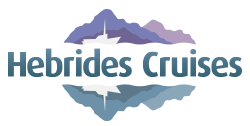





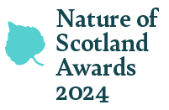
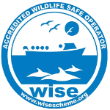
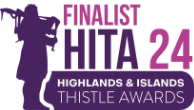
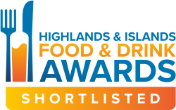










Hello Emma, We have enjoyed our lovely cruise with you thank you, from 3rd - 13th August. We had a fabulous time and Izzie cooked us fabulous food, (especially with my non-dairy stuff). Best wishes, Bev
Bev: 3 August 2024Far-flung islands: Mingulay to the Shiants